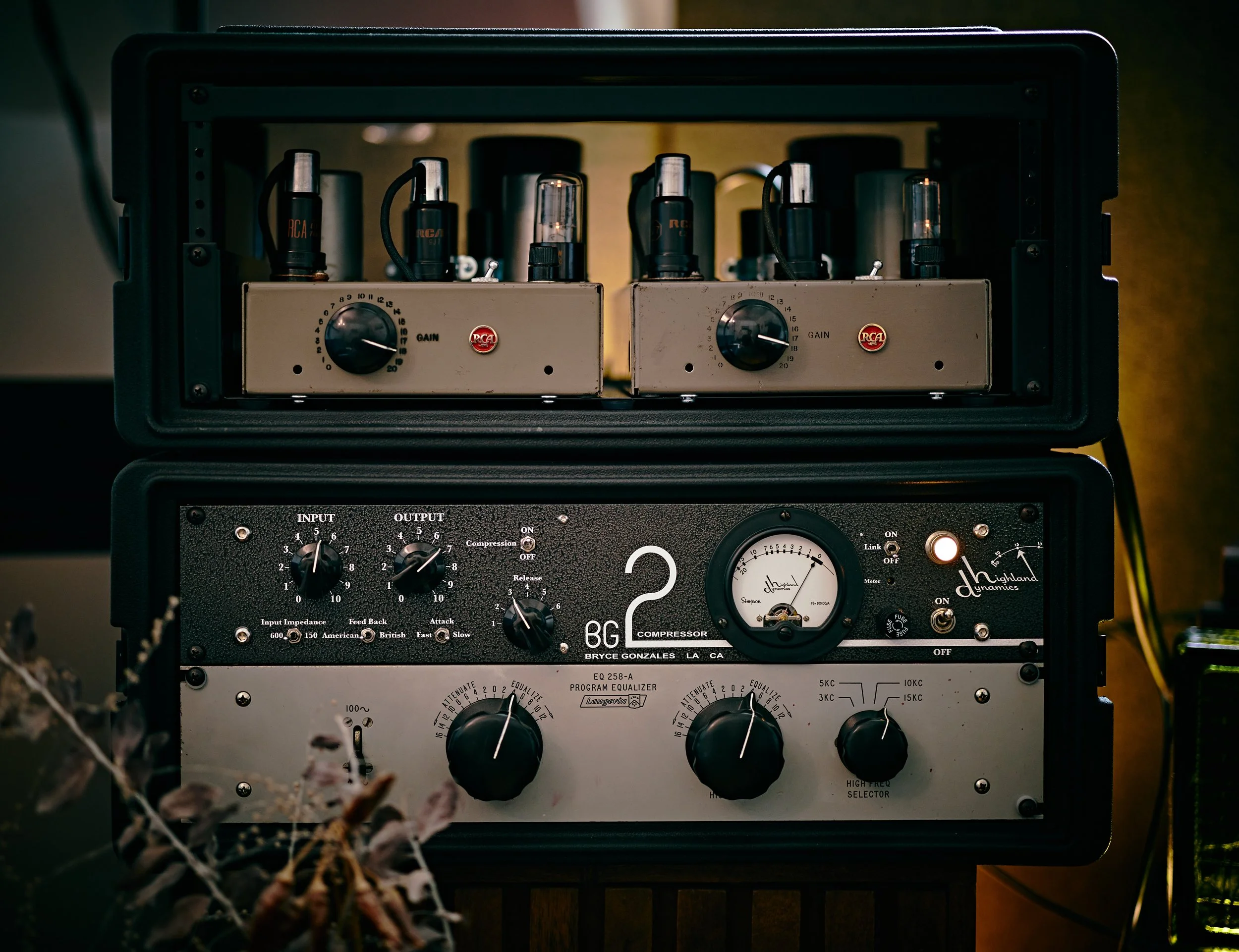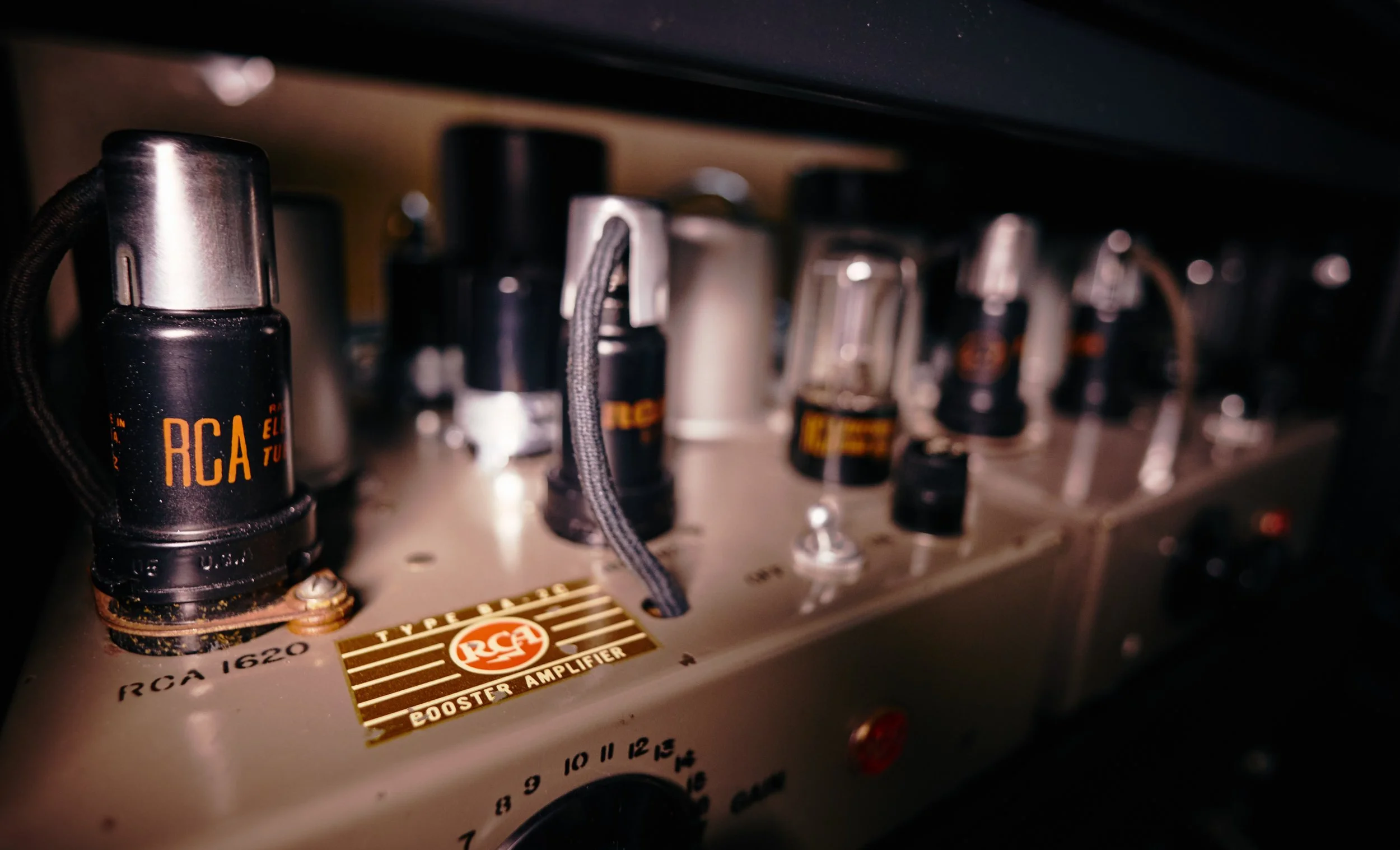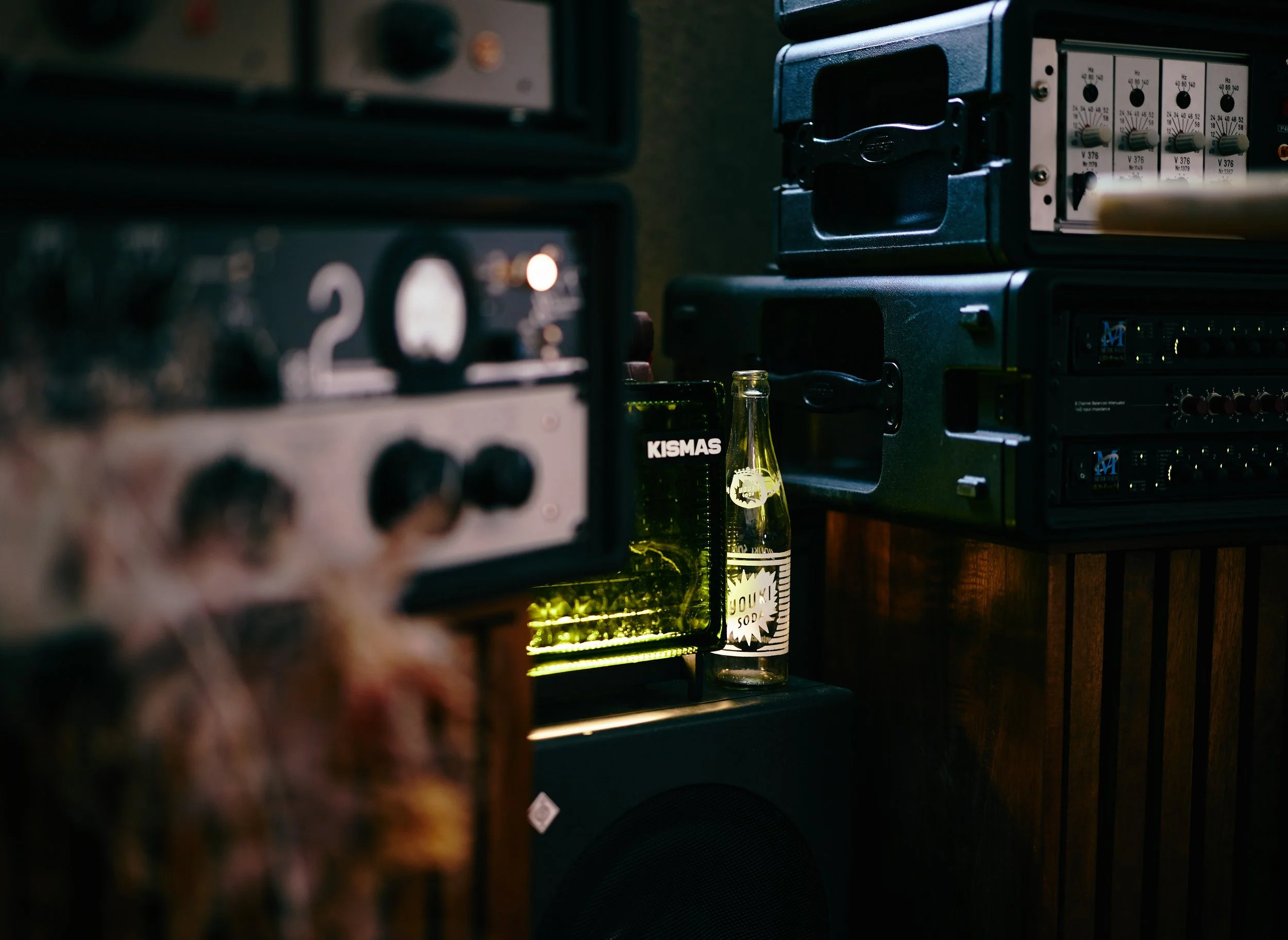
THE SOUND @ TONI WAVE
Unique soundscapes from the 1940s to 1970s
TONI WAVE recordings are built upon some of the most iconic and rare electronica that you can’t replicate within the digital domain. It starts with a fine selection of vintage microphones connected to perfectly maintained high end preamps from the 1940s and 1960s following into some inductor EQ goodness all the way in before Metric Halo 3d MkIV conversion.
The signal can easily pass a handfull of rich sounding transformers and inductors, emphasizing the finest detail and roaring energy of the source when setup sensitively.
In the decades of the 1940s and 1970s some outstanding productions were made with innovative, expressive musicanship and engineers who experimented with recording techniques and equipment that might be the peak of sound engineering.
Berlin sounds of the 1960s
The merge of Berlin and Los Angeles starts with the front end of this studio: The preamps and Equalizers. 12 channels of the best preamps of the early silicon transistor era of the 1960s are the heart of capturing music at TONI WAVE. It took years to source and bring the TAB/Telefunken V376 and Siemens V276 into the best possible matched state to capture an unmatched sonic quality of the best transformers, inductors and signal path designs ever made.
With every microphone feeding one of these preamps, the signal passes two of the juiciest transformers ever manufactured, custom inductors, Siemens MKL caps through a circuit design that emphasises musical focus and vividness. All vintage preamps and equalizers are in perfect shape following custom made attenuators to drive them individually into saturation.
Los Angeles, California from the 1940s so 1960s
While the German engineers of the 1960s led the audio world in outstanding engineering design and exact representation of the musical source, the West Coast of the United States of America came up with some extraordinary musical sounding equipment that wrote music history - like Electrodyne, Langevin, RCA and Teletronix / Urei tools which were way more bold and manipulative sounding than the more gentle and neutral German counterparts. Combining those makes for some unheard energy not found in any digital playground.
Equipment
-
RCA BA-2 tube Preamps
Telefunken/TAB V376 Preamps
Siemens V276 Preamps
Neve 1272 Preamp
Langevin EQ 258-A Equalizer
Electrodyne 2511 Equalizer
TAB W95c Equalizer
UREI 1178 Compressor
Highland Dynamics BG-2 Tube Compressor
A-Designs Reddi, Tube DI
Cinemag custom DIs
all original, no clones.
-
Metric Halo ULN-8 3d MkIV
Metric Halo LIO-8 3d MkIV
(with custom linear power supply)
-
CONDENSER MICROPHONES:
Neumann UM57
Neumann / Gefell MV691 with Neumann UM70 matched pair
Neumann KM74 matched pair
Neumann CMV563 / M7
RIBBON MICROPHONES:
RCA 77 D
RCA MI-4010
Beyer M160 matched 1950’s Alnico pair
Coles STC 4038
Coles 4050 matched pair
DYNAMIC MOVING COIL MICROPHONES:
AKG D24 matched pair
Beyerdynamic M88
Sennheiser MD409 matched pair
Sennheiser MD421 matched triplet
Sennheiser MD441 matched pair
Shure Unidyne III
All equipment is serviced and matched by top techs like Clarence Kane at ENAK, Stewart Tavener at Xaudia, Jon Ulrigg Ribbons, Doug Williams at EMRR, Felix Nutz at audiosohn.com, Pierre-Olivier Margerand ar POM Audio Design. I highly recommend their services.























